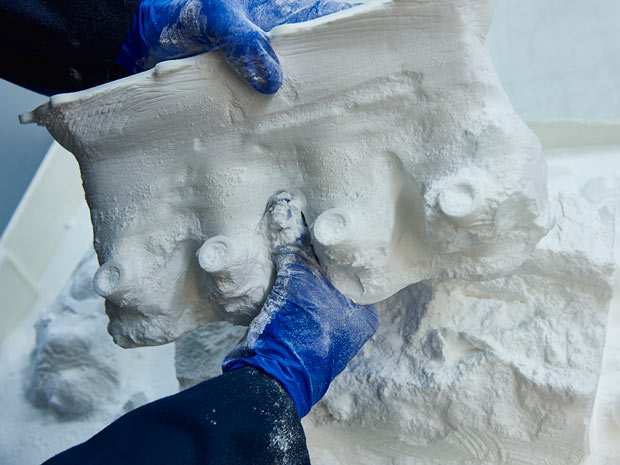An Insider’s Guide to Laser Sintering
Latest News
March 14, 2016
 Dear Desktop Engineering Reader:
Dear Desktop Engineering Reader:
The Android ad comparing and contrasting the rich sound of a normal piano to a piano tuned so that all 88 keys hit the same Middle C note brilliantly hammers home the message that all mobile devices are not the same. That same message applies with additive manufacturing (AM) machines. They all do the same thing—3D print parts. Yet it’s how they operate and how you can play designs to a machine’s strength that makes all the difference. Today’s Check it Out link offers a paper on designing for laser sintering (LS) AM machines. It hits all the right notes.
Actually, “From the Design Lab: An Insider’s Guide to Laser Sintering, Mastering Successful LS Parts at Any 3D Printing Experience Level,” is more than just a paper. It’s a report on a study that sought to solve common laser sintering design problems through a series of experiments on parts containing test features with varying dimensions and build orientations. The design guidelines and test results were commissioned by Stratasys Direct Manufacturing and developed at the University of Texas at Austin as part of its Mechanical Engineering Design Projects Program.The tested features were wall thickness, holes, text and movable components. Each feature’s testing goal, methodology, pass/fail criteria and outcomes are discussed individually and in detail. All discussions are well enhanced with illustrations, tables, photos and the like that provide insight into details.
Testing consisted of multiple variations of a simple part designed for a specific feature. For example, the same basic design with 15 different wall thicknesses was tested to determine how thin a wall could be made before it degraded. Assorted sized serif and sans serif fonts were extruded and de-bossed into a plate as well as up and down to determine optimal readability; and so on. At the end of each feature discussion there’s a bullet summary of tests results.
 Designing parts for fabrication on a laser sintering 3D printer presents many unique challenges that can affect design performance. “From the Design Lab: An Insider’s Guide to Laser Sintering, Mastering Successful Laser Sintered Parts at Any 3D Printing Experience Level” provides designers insider tips on how to better design laser sintered parts. Image courtesy of Stratasys Direct Manufacturing.
Designing parts for fabrication on a laser sintering 3D printer presents many unique challenges that can affect design performance. “From the Design Lab: An Insider’s Guide to Laser Sintering, Mastering Successful Laser Sintered Parts at Any 3D Printing Experience Level” provides designers insider tips on how to better design laser sintered parts. Image courtesy of Stratasys Direct Manufacturing.The paper concludes with many concrete design guidelines developed by Stratasys Direct Manufacturing that should help you better handle tricky design details for laser-sintering fabrication. For instance, larger tooth separation distances could cause slippage in gears and “smaller holes are better when in proximity to edges or walls whereas larger holes are recommended overall when tighter dimensional tolerances are required.”
Consistently clear and informative, “From the Design Lab: An Insider’s Guide to Laser Sintering” is a cut above the norm. Hit today’s Check it Out link to see for yourself.
Thanks, Pal.—Lockwood
Anthony J. Lockwood
Editor at Large, Desktop Engineering
Subscribe to our FREE magazine, FREE email newsletters or both!
Latest News
About the Author
Anthony J. Lockwood is Digital Engineering’s founding editor. He is now retired. Contact him via [email protected].
Follow DE





